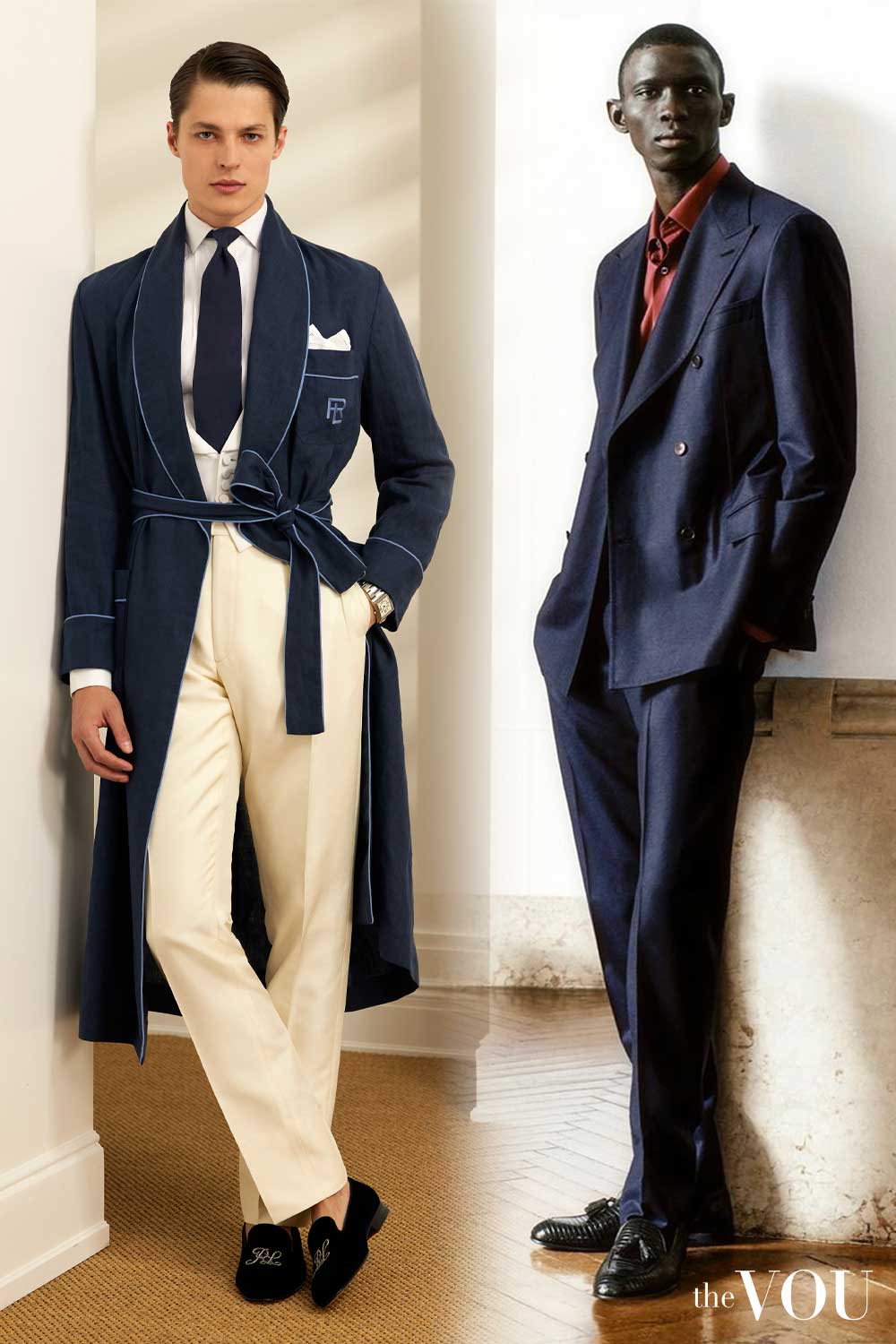Branded Clothing for Active Lifestyles: What Fabrics Support Performance?
Branded Clothing for Active Lifestyles: What Fabrics Support Performance?
Blog Article
Recognizing Apparel: The Significance of Material Options in Your Closet
The selection of textile in clothing plays a pivotal role in both appearances and functionality. Different materials supply differing degrees of durability, breathability, and convenience, directly affecting the wearer's experience. Understanding these nuances can enhance one's closet markedly. Several ignore how these selections can affect not just individual style, but additionally sustainability. What material choices could redefine your wardrobe and align it with both style and obligation?
The Role of Fabric in Style and Functionality

Typical Fabric Kinds and Their Qualities
When picking apparel, comprehending the characteristics of usual textile kinds is crucial for making educated choices. Cotton, a widely-used natural fiber, is understood for its convenience, soft qualities, and breathability, making it ideal for sportswear and everyday garments. Bed linen, another all-natural alternative, boasts excellent moisture-wicking residential properties and an unique structure, perfect for cozy climates.Wool, typically preferred for its warmth and toughness, varies in fineness; merino wool is soft against the skin, while coarser types are made use of for outerwear. Artificial textiles like polyester and nylon supply durability and resistance to creases, making them prominent for activewear and traveling garments. Finally, blends, which integrate natural and synthetic fibers, can boost functionality while maintaining comfort. By identifying these material qualities, individuals can pick apparel that aligns with their lifestyle and aesthetic preferences.
Breathability and Comfort: Choosing the Right Fabrics for Various Climates
Choosing the best fabrics for different environments can considerably enhance convenience and total wearability. Breathable materials are essential in hot climates, as they permit air blood circulation and dampness evaporation. Fabrics such as cotton, linen, and moisture-wicking synthetics properly draw sweat far from the body, maintaining the user cool and completely dry. Conversely, in chillier environments, thicker materials like wool or fleece provide insulation while keeping breathability, making sure warmth without overheating.Additionally, the selection of material weight plays an important function; light-weight fabrics are preferable for summer, whereas larger options are matched for winter season wear. Comprehending the special residential or commercial properties of each textile makes it possible for people to dress appropriately for differing weather condition conditions. Eventually, selecting breathable and comfy textiles tailored to certain environments can significantly boost everyday comfort and boost the overall experience of using apparel.
Sturdiness and Treatment: Exactly How Material Affects Long Life of Your Wardrobe
Picking the right products can significantly affect the resilience and treatment demands of a wardrobe. Fabrics such as cotton and polyester are understood for their durability and convenience of upkeep, making them ideal for day-to-day wear. In comparison, fragile materials like silk and lace require even more mindful handling and specialized cleaning techniques, which can enhance the time and initiative needed for care. Branded Clothing.Durability is also affected by the textile's weave and finish; tightly woven fabrics tend to withstand damage far better than loosely woven options. Additionally, synthetic blends frequently give boosted durability, incorporating the very best top qualities of multiple fibers.Understanding the treatment guidelines for every fabric is vital, as incorrect washing or drying can result in early wear. Ultimately, selecting resilient materials can bring about a longer-lasting wardrobe, minimizing the regularity of substitutes and adding to a much more lasting fashion choice
The Influence of Material on Fit and Silhouette

Sustainable Material Options: Making Eco-Friendly Choices
The impact of fabric prolongs past fit and silhouette to incorporate environmental anonymous aspects, motivating a growing rate of interest in lasting textile choices. Environmentally friendly fabrics, such as natural cotton, hemp, and Tencel, are gaining traction amongst consumers who prioritize sustainability in their closets. These materials are typically produced with fewer chemicals and water, lowering their environmental footprint.Additionally, recycled textiles, made from post-consumer waste, supply an innovative service to the fabric market's pollution problem. Brands significantly welcome openness in their sourcing approaches, enabling customers to make educated choices about their purchases.Choosing sustainable materials not just supports ethical methods yet additionally encourages the fashion business to adopt even more accountable production techniques. As understanding of ecological issues climbs, people are urged to reflect on the lasting effect of their textile choices, promoting a movement towards a much more sustainable and ecologically mindful approach to fashion.
Boosting Design: Just How Material Can Change a Clothing
While many may focus on shade and cut when picking an outfit, the selection of material plays an essential duty in boosting design and boosting total appearance. useful site Various materials convey unique state of minds and messages; as an example, silk exudes deluxe and class, while jeans offers a casual, loosened up vibe. The appearance and drape of a material can drastically alter the silhouette, with organized fabrics offering a polished look and softer ones creating an extra fluid, relaxed aesthetic.Moreover, the weight of the textile influences wearability throughout seasons. Light-weight fabrics like linen and cotton are excellent for summertime, while much heavier materials such as woollen and velvet provide warmth and sophistication in cooler months. Understanding textile buildings, such as breathability and stretch, likewise encourages people to make enlightened selections that improve comfort without jeopardizing style. Eventually, the best fabric can transform a clothing from common to amazing, making it a crucial consideration in any type of closet.
Frequently Asked Inquiries
How Do I Determine the Textile Content of My Clothes?
To determine material web content, one can analyze treatment tags, conduct melt examinations for fiber identification, or speak with material swatches. These techniques assist distinguish materials, guaranteeing notified options for garments treatment and maintenance in daily wear.
Can Material Selection Affect My Mood or Self-confidence?
Textile selection can greatly influence an individual's mood and self-confidence. Branded Clothing. Particular products might stimulate feelings of convenience or style, while others can feel unflattering or limiting, ultimately influencing self-perception and emotional health throughout the day
What Fabrics Are Ideal for Sensitive Skin?
For people with delicate skin, all-natural materials like cotton, bamboo, and linen are frequently recommended. These materials are breathable, hypoallergenic, and less most likely to trigger irritability, making them appropriate selections for comfort and skin health.
Exactly how Do I Correctly Laundry and Treatment for Various Fabrics?
To correctly wash and care for various fabrics, one should take into consideration each material's specific demands, consisting of temperature level setups, detergents, and drying out approaches, ensuring durability and maintaining the textile's original high qualities for optimal usage.
Exist Specific Fabrics for Athletic or Performance Put On?
Athletic or performance wear typically uses textiles such as nylon, polyester, and spandex. These products are made for moisture-wicking, breathability, and flexibility, enhancing activity and comfort during exercises while providing sturdiness and support. On the other hand, in chillier climates, thicker fabrics like woollen or fleece provide insulation while retaining breathability, making certain heat without overheating.Additionally, the selection of material weight plays a crucial duty; lightweight textiles are more effective for summer, whereas much heavier choices are matched for winter wear. In contrast, fragile materials like silk and shoelace best site call for even more mindful handling and specialized cleaning approaches, which can increase the time and effort needed for care.Durability is additionally influenced by the fabric's weave and surface; tightly woven fabrics often tend to resist wear and tear far better than freely woven alternatives. In comparison, stiff materials can limit movement yet offer a timeless, polished look.Moreover, the thickness and structure of the material can affect the visual understanding of body shape. The impact of fabric expands beyond fit and silhouette to include environmental factors, prompting a growing rate of interest in sustainable material choices. The appearance and drape of a textile can drastically alter the silhouette, with structured textiles supplying a polished appearance and softer ones developing an extra fluid, kicked back aesthetic.Moreover, the weight of the material affects wearability throughout seasons.
Report this page